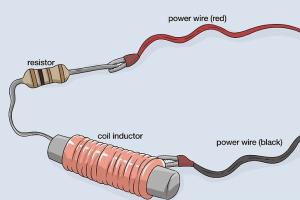Ultimate Guide to Measuring Inductance: Techniques, Tools & Tips

-
Quick Links:
- 1. Introduction
- 2. Understanding Inductance
- 3. Importance of Measuring Inductance
- 4. Measuring Inductance Techniques
- 5. Tools for Measuring Inductance
- 6. Step-by-Step Guide to Measure Inductance
- 7. Case Studies
- 8. Expert Insights
- 9. Data-Driven Analysis
- 10. FAQs
1. Introduction
Inductance is a fundamental property in electrical engineering, crucial for the design and functioning of various electronic components. Being able to accurately measure inductance is essential for engineers, hobbyists, and technicians alike.
2. Understanding Inductance
Inductance is defined as the ability of a conductor to store electrical energy in a magnetic field when an electric current passes through it. The unit of inductance is the Henry (H).
2.1 The Role of Inductors
Inductors are passive components that utilize inductance to impede changes in current flow, making them essential in filters, oscillators, and transformers.
3. Importance of Measuring Inductance
Accurate inductance measurement is vital for:
- Ensuring circuit functionality
- Troubleshooting electronic devices
- Validating component specifications
4. Measuring Inductance Techniques
There are several techniques for measuring inductance, including:
4.1 Using an LCR Meter
An LCR meter is a specialized device that measures inductance, capacitance, and resistance.
4.2 Using a Function Generator and Oscilloscope
This method involves applying a known AC signal and analyzing the output with an oscilloscope.
4.3 Using a Bridge Circuit
A bridge circuit, like the Maxwell or Hay bridge, can be used for precise inductance measurements.
5. Tools for Measuring Inductance
Some of the most common tools include:
- LCR Meters
- Oscilloscopes
- Inductance bridges
- Network analyzers
6. Step-by-Step Guide to Measure Inductance
Here’s how to measure inductance using an LCR meter:
- Disconnect the inductor from any circuit.
- Set the LCR meter to the inductance measurement mode.
- Connect the inductor leads to the meter terminals.
- Read the measurement displayed on the meter.
7. Case Studies
Several case studies illustrate the importance of precise inductance measurements. For example, in the design of RF circuits, even small variations in inductance can lead to significant performance issues.
8. Expert Insights
Experts recommend regularly calibrating measuring devices to ensure accuracy and reliability in inductance measurements.
9. Data-Driven Analysis
Statistical data shows that improper inductance measurement can lead to a failure rate of up to 25% in electronic circuits, emphasizing the need for precision.
10. FAQs
10.1 What is the unit of inductance?
The unit of inductance is the Henry (H).
10.2 How does temperature affect inductance?
Temperature changes can affect the material properties and dimensions of inductors, leading to variations in inductance.
10.3 Can I measure inductance without a meter?
While it's challenging to measure inductance accurately without a meter, methods involving oscilloscopes and function generators can be used.
10.4 What is the difference between inductance and resistance?
Inductance is the property of a conductor to store energy in a magnetic field, while resistance opposes the flow of electrical current.
10.5 Why is inductance important in circuits?
Inductance plays a critical role in filtering, tuning, and energy storage within circuits.
10.6 How can I improve the accuracy of my inductance measurements?
Calibrating measuring instruments and using appropriate techniques can significantly improve measurement accuracy.
10.7 What factors affect inductance measurement accuracy?
Factors such as temperature, frequency, and the quality of connections can affect measurement accuracy.
10.8 Can I measure inductance in a circuit?
It's advisable to measure inductance with the component removed from the circuit to avoid interference.
10.9 What types of inductors are there?
Common types include air-core, ferrite-core, and laminated-core inductors, each with specific applications.
10.10 Is there a simple way to calculate inductance?
Yes, you can estimate inductance using formulas based on the physical dimensions of the inductor and the number of turns.
Conclusion
Measuring inductance is an essential skill for anyone involved in electronics. With the right tools and techniques, accurate measurements can be achieved, leading to better circuit performance and reliability.
For further reading and resources, refer to the following authoritative links:
- Analog Devices - Inductance Measurement Techniques
- Electronics Tutorials - Inductors and Inductance
- NI - Inductance Measurements
Random Reads